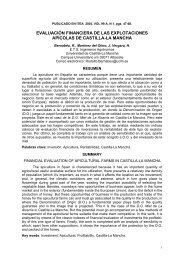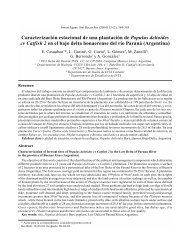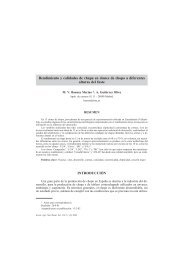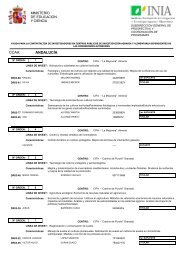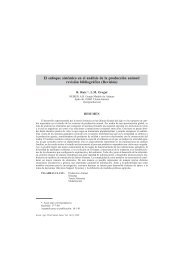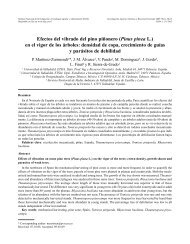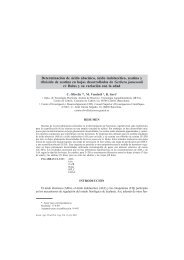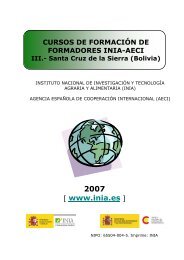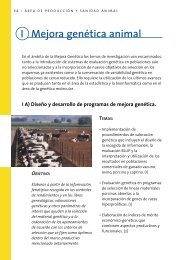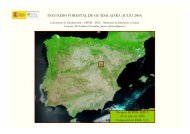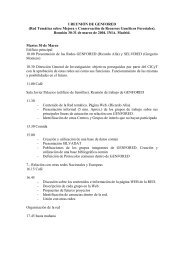Status of medicinal and aromatic plants in - Inia
Status of medicinal and aromatic plants in - Inia
Status of medicinal and aromatic plants in - Inia
Create successful ePaper yourself
Turn your PDF publications into a flip-book with our unique Google optimized e-Paper software.
74<br />
WORKING GROUP ON MEDICINAL AND AROMATIC PLANTS: FIRST MEETING<br />
300<br />
250<br />
Harvested from nature<br />
200<br />
tons<br />
150<br />
100<br />
50<br />
Produced <strong>in</strong> cultivation<br />
Imported<br />
Exported<br />
0<br />
1998 1999 2000 2001<br />
Fig.1. Total volumes <strong>of</strong> raw material <strong>of</strong> <strong>medic<strong>in</strong>al</strong> <strong>and</strong> <strong>aromatic</strong> <strong>plants</strong><br />
produced <strong>in</strong> natural habitats, cultivated, imported <strong>and</strong> exported <strong>in</strong> 1998-2001 <strong>in</strong> Lithuania.<br />
The <strong>in</strong>creased MAP trade has been greatly <strong>in</strong>fluenced by the liberalization <strong>of</strong> the exportimport<br />
activity. Accord<strong>in</strong>g to import-export data Lithuania can be characterized as a country<br />
ma<strong>in</strong>ly import<strong>in</strong>g the raw material <strong>in</strong> contrast to other eastern <strong>and</strong> central European<br />
countries (Bernáth 1999) (Fig. 2). The average annual volume <strong>of</strong> imported MAP raw material<br />
is about 65% <strong>of</strong> all material used <strong>in</strong> the pharmaceutical <strong>in</strong>dustry. Exports make up a small<br />
part <strong>of</strong> the trade <strong>and</strong> are ma<strong>in</strong>ly directed to the countries <strong>of</strong> the former Soviet Union.<br />
Ukra<strong>in</strong>e<br />
5%<br />
Egypt<br />
11%<br />
Latvia<br />
13%<br />
Germany<br />
2%<br />
South Africa<br />
1%<br />
Other<br />
6%<br />
Pol<strong>and</strong><br />
62%<br />
Fig. 2. Structure <strong>of</strong> MAP imports <strong>in</strong> Lithuania (1996-2001).<br />
Cultivation is one <strong>of</strong> the solutions to the problem <strong>of</strong> over-exploitation <strong>of</strong> wild species.<br />
Dur<strong>in</strong>g recent years an ever-<strong>in</strong>creas<strong>in</strong>g number <strong>of</strong> the rural population became <strong>in</strong>volved <strong>in</strong><br />
<strong>medic<strong>in</strong>al</strong> plant cultivation. The cultivated production covers only 4-6% <strong>of</strong> the dem<strong>and</strong> for<br />
MAP raw material. The ma<strong>in</strong> <strong>plants</strong> under more <strong>in</strong>tensive cultivation are caraway, valerian,<br />
marigold, chamomile, pepperm<strong>in</strong>t, <strong>and</strong> lemon thyme.




